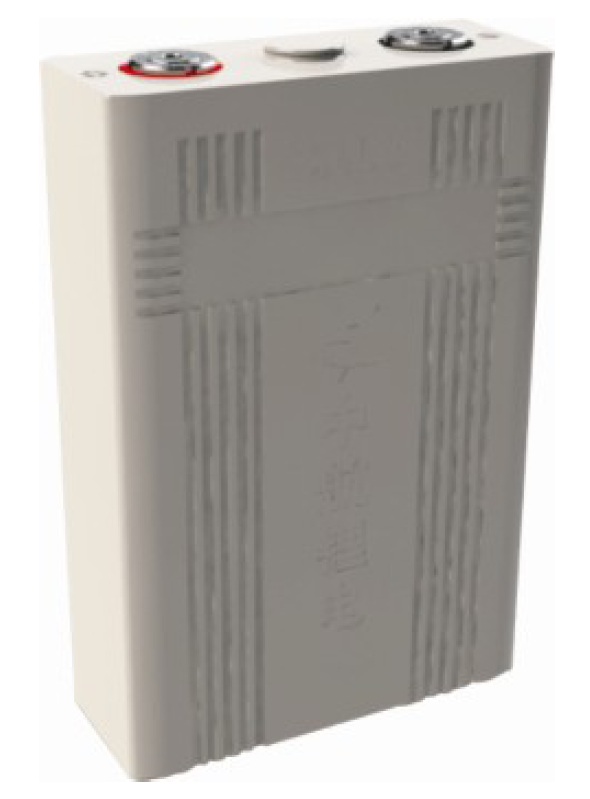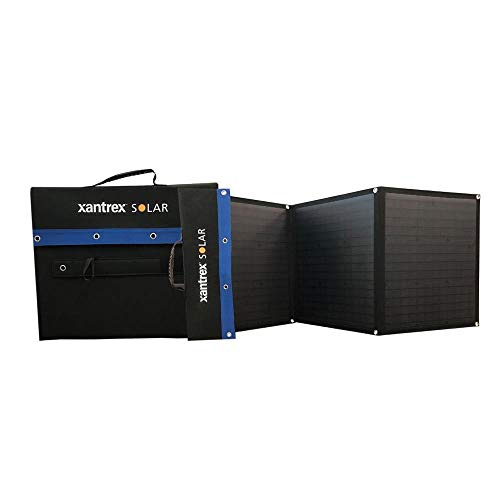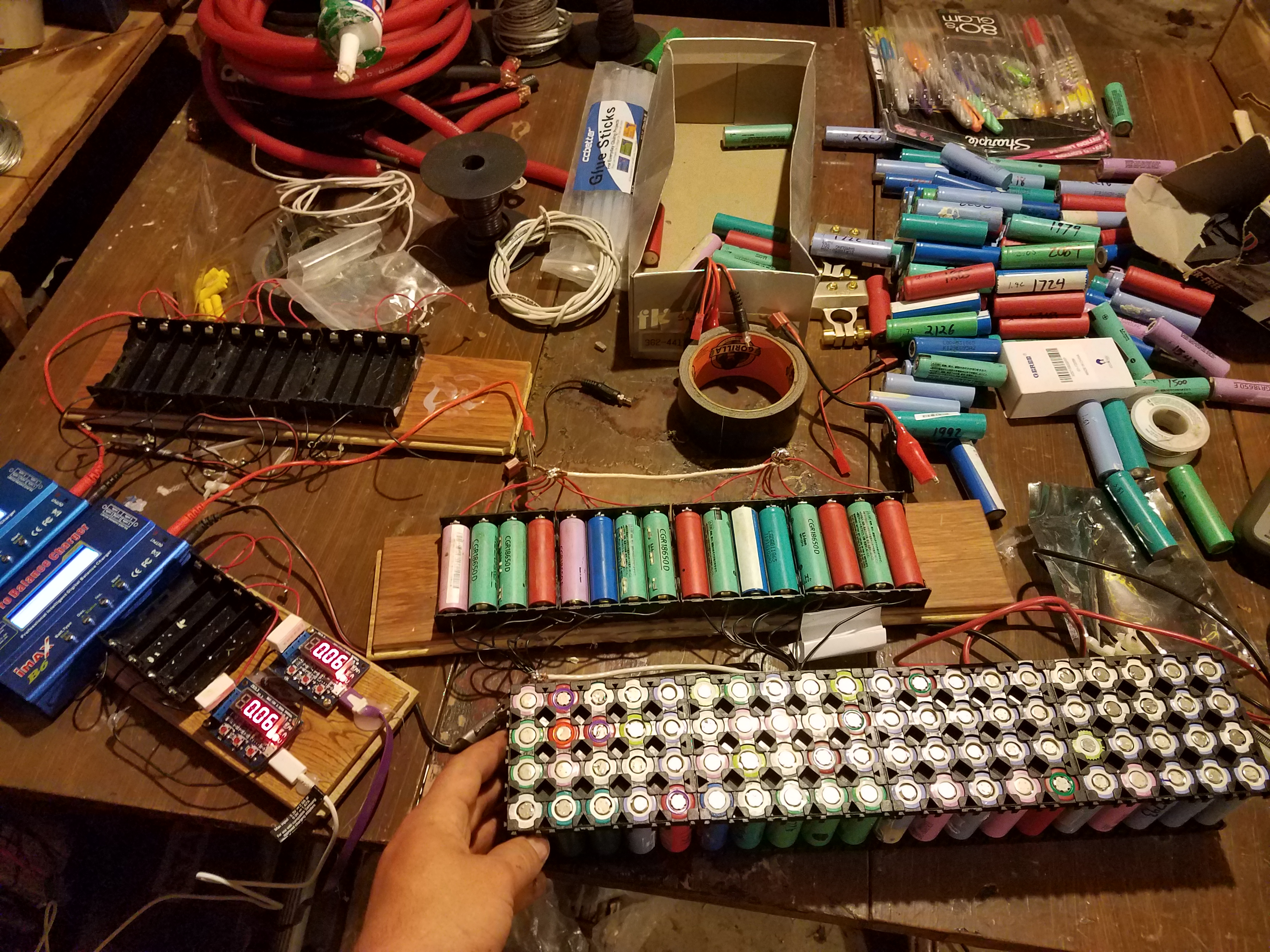Thanks for all the replies everyone! I haven't visited this post in awhile...
At this point I'm still leaning towards getting this AC to run on 18650's. Unfortunately I've got about 15 other projects going on at once, I just had to put 700 bucks into my van for inspection, so things are going slowly... but hey, maybe I'll get this worked out for summer 2018, and that's just fine with me. At this point I'm looking at it as more of a challenge and a labor of love. Whether I'm doing that because I'm crazy or because it justifies my choice, I don't know. Probably somewhere in the middle

I'm hoping to at least by the end of this year feel like I'm living comfortably in my van rather than being a mad scientist that sleeps inside a rattly moving unfinished science experiment. Such is life when you're an 'idea person' I suppose...
Anyway, I've started with the cells that I had lying around from a previous 18650 project. I've capacity tested about 300 of them and have ended up with around 170 cells that are above 1500 mAh, which is my arbitrary cutoff. My average capacity across the board is looking to be about 1850 mAh per cell at 3.7v, so I'm fairly pleased with that. I've bought some 18650 cell holders off amazon and built what I consider to be my first module in my pack.
So here are my thoughts so far... I think eventually when things start to really develop I'm going to make a new thread because this, even right now, is beginning to fall far outside the scope of the topic of this post so I don’t want to have it run off the rails too far, but since we're here now…
Firstly my plan is to put the cells in 4s, not 3s. The reason for this is because of the lower amount of capacity loss I will suffer from having the cells in this arrangement. I look at it this way. Fully discharged to safe discharge capacity, a single cell will be at 3v. In 3s, fully discharged the cells will be at 9v. This is 1.5v too low to run almost all inverters, and is not a healthy voltage to run most things that run at 12v. When I was experimenting with some throw-away marine batteries, I noticed that when they fell below 10.2ish volts or so, my compressor fridge would begin to ‘hiccup’, my LED lights would flicker and not shine the right color, my inverter of course wouldnt turn on, and my fan ran slow. I don’t think the electronics like running at a voltage below 11v. So if an 18650 cell has a useable voltage range of 3,3.7,4.2, that means that my useable range in a nominal 12v system per cell is going to be 3.6,3.7,4.2. I’m losing over half a volt of the batteries capacity, and that equates to about a 50% reduction in useable cell capacity depending on discharge characteristics. To my eyes that makes using 3s incredibly inefficient.
The problem with 4s is similar just in reverse. However, to make a long story short it isn’t as bad. In 4s, a pack would have voltages of 12,14.8,16.8. The only hurdle is that I would need to get an inverter that allows a higher and obscure input voltage upper limit over the normal 15v that it seems is almost the industry standard. I’ve only found one inverter that gets close. (
http://www.samlexamerica.com/products/ProductDetail.aspx?pid=503 )It allows an input voltage of 16.5v. As far as I’m concerned, I won’t be programming my charge controller to charge the cells to 4.2v anyway, because that results in capacity degradation. So at my upper limit of 4.1v per cell or maybe less, I will be taking a .1 or .2v capacity loss hit instead of a .6v capacity loss hit. I’ve made a small test pack out of 8 of these cells, and I’ve run all my current appliances off those cells at full voltage, and they seem to do just fine. Maybe I’ll burn some stuff out, maybe I won’t. So far I’m feeling lucky

So I’ve decided that at this point I’d like to have my packs arranged as 1s80p, then those individual packs in 4s4p. I’m planning on having 16 packs in total. That would be a battery of 1280 cells. At an average of 1850 mAh per cell, that would give me a bank with a nominal voltage of 14.8v and an amp hour rating of 592, according to my unverified math.
And I think I can even fit them under my floor!
This is the point where you call me crazy and go browse some other post….

I was originally thinking to put the packs in 4s20p, but that would essentially do nothing but increase complexity and increase my need to balance smaller groups of cells. As long as the cells are in parallel, they do not need to be balanced. Only cells in series need to be balanced, so it seems the simple solution to me is to put as few groups of cells in series as possible.
So there’s a lot of soldering to do…
I hate soldering. I’m so bad at it I don’t think I’d last a day trying to get these cells soldered to a point where I can actually trust the connections. I’ve also read that these batteries shouldn’t be soldered anyhow, but it seems that many people do it without issue, so perhaps that isn’t true. I’ve always been one to err on the side of caution however, so I’m going to spot weld mine with a battery spot welder and nickel strips. This however, leaves the problem of not being able to fuse the cells individually, which I think is absolutely vital especially since I will indeed literally be sleeping on top of them. I’ve thought of a possible solution but I have yet to try it out…
I’m thinking of taking the individual nickel strips and essentially just drilling/filing/cutting some of the strip away in order to make it thinner, and then testing that strip with a power supply to get to the exact width where the strip will break at 5-6A. After I find that exact width, I can stack all my needed strips in a jig of some kind and cut them all at the same time to the needed width, and then proceed to spot weld them as normal. Maybe someone who is crazy enough to care about this idea can tell me if they think it's a good one or not.
So now we get to the really, really, really interesting part.
Dun
Dun
DUNNNNN
The BMS.
Because I am a complete masochist and am utterly unaware of my own limitations, I have decided I want to program my own BMS. I’ve bought myself an Arduino and am currently learning how to program it, and I think without an incredible amount of effort I’m going to be able to write myself at least a rudimentary management program, especially with the help of the online Arduino community. I have a few reasons for choosing this route. Firstly, I want to understand what my BMS is doing completely. I don’t really trust what one of these ebay BMS’s is going to do for me… are the components accurate, are they rated for the voltage I want to use? Are they safe? Do they need additional components to work correctly? I want to understand this system from the ground up. There’s others I have seen online who have made battery management systems with Arduino, so I don’t think it’s terribly beyond me, but I guess we’ll find out eventually won’t we? I think my saving grace is that if I do this right, I’m only going to have to balance a pack of 4s instead of a pack with 16 groups of 4s. That will reduce the complexity of this project enormously.
The last hurdle would then be getting my solar controller to play nice with the BMS. It is a programmable solar controller, and lithium ion batteries are actually very very simple to charge (as in they don’t need to be floated, or bulked, or whatever else) so I don’t think this leg of the journey will be quite as rigorous as the rest of it.
So at this point these are my tentative plans, subject to change at any moment due to necessity or loss of interest. I really value all the input I’ve received so far, and I’ve read all the replies and I thank you for them with sincerity. Hopefully next time I post I have some good news for you all!

































































